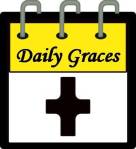I was delighted to have the opportunity to participate in the St. Paul Center’s Emmaus Academy this January. I was able to take the course Tolkien’s Liturgical Imagination presented by Dr. Ben Reinhard. This course covered a wide range of topics, both liturgical and Tolkien, as perhaps the name suggests. It did not disappoint.
Emmaus Academy is a paid subscription in order to access this and all of the other courses. The Academy is run by the St. Paul Center which was founded by Dr. Scott Hahn. I was able to review this course free of charge in exchange for a thoughtful review of the content.
Dr. Reinhard begins his lectures by inviting the listeners into Tolkien’s daily life, proposing that before liturgical elements can be found within Tolkien’s works, we first have to understand just how liturgically grounded his life was. And boy, was it! As someone who has studied liturgy, I was deeply impressed with Tolkien’s knowledge of liturgical texts and the ways he seamlessly wove them into his regular correspondence and life. He even recommends memorizing important liturgical prayers as a critical way for his son, Christopher, to remain close to his faith while serving in World War II.
Many of us know the prayers of the Mass and can say them along with the priest and community during Mass. Many of us know popular songs or poetry that can be recited along with the album playing. But have you ever tried to repeat them on your own, by yourself, without the text in front of you? It is an interesting and challenging exercise, because sometimes those prayers, songs, or poems you thought you knew so well are difficult to recall in full unless you have taken the time to deeply study them. Tolkien studied them deeply.
This deep study of the liturgy and daily living it out (Tolkien attended Mass daily for the majority of his life) could not but shape and inform his writing. Dr. Reinhard goes through a number of examples, letters, and short stories, teasing this theory out before getting to what everyone is waiting for, The Lord of the Rings. I am a Tolkien lover, and I found many references and moments which made me smile as I recalled the wider story surrounding whatever portion was being referenced. However, Dr. Reinhard does a good job providing the wider context and details needed to understand whatever portion of whatever story he is using to illustrate his point.
I very much enjoyed this course. As I said, I already love Tolkien’s stories. But after this course, I have a deeper appreciation for who Tolkien was and how his quiet Catholicism helped him tell these masterful tales. I also have a better grasp on why these stories have such an inspirational quality. If you are someone who is on the fence about Tolkien, or hasn’t quite gotten through his stories, I would still recommend this course to you. I hope that you will find a new connection to Tolkien that inspires you to give his works a try. At the end of the day, as Dr. Reinhard explains, Tolkien’s works are about the exaltation of the humble (I’m looking at you, hobbit fans), which is, at it’s core, a most liturgical and Catholic viewpoint.
If all this isn’t enough, I talked at length about what I learned with Ben. These conversations, coupled with our 12 year old just finishing listening to an abridged version of The Lord of the Rings, we’ve had a lot of Tolkien in our house. But instead of being tired of hearing his name, Ben is now re-reading the series and we are slowly watching the Director’s Cuts of the films (for the unknown numbered time, these are favorites!). Basically, if you’ve been thinking about reading the series, or re-reading it, this course has the potential to tip the scales for you in a very good way.



